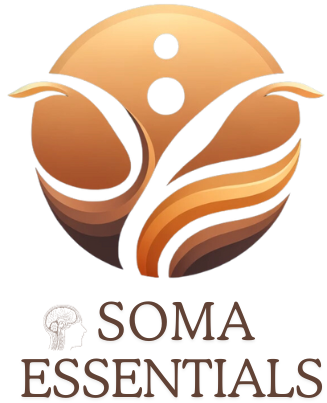Unlocking the Mind-Body Connection: A Guide to Somatic Therapy for Improved Well-Being
Unlocking the Mind-Body Connection: A Guide to Somatic Therapy for Improved Well-BeingWelcome to the world of somatic therapy, where the mind and body are intertwined in a powerful healing process. This form of therapy has been gaining popularity in recent years, as more and more people are realizing the importance of addressing both the physical and emotional aspects of their well-being.Somatic therapy, also known as dance/movement therapy, is a holistic approach that focuses on the connection between the mind and body. It recognizes that our bodies hold onto emotions and past traumas, and by using movement and dance, we can release these emotions and promote healing from within.In this article, we will explore the various types of somatic therapy and how they can benefit our overall well-being. From improving physical health to enhancing self-awareness and reducing stress and anxiety, somatic therapy offers a wide range of benefits for individuals of all ages.Join us as we dive into the world of somatic therapy and discover how it can help you unlock the mind-body connection for improved well-being. So put on your dancing shoes and get ready to move towards a happier, healthier you.
To begin, let’s define what somatic therapy is. Somatic therapy is a form of psychotherapy that uses the mind-body connection as a tool for healing. It is based on the principle that our thoughts, emotions, and physical sensations are all connected, and by working with the body, we can address and resolve underlying psychological issues. Somatic therapy can involve various techniques such as movement, touch, breathwork, and mindfulness practices to help individuals release tension, trauma, and emotional blocks stored in the body.
There are several types of somatic therapy, including Somatic Experiencing (SE), Body-Mind Centering (BMC), and Dance/Movement Therapy (DMT). Each type has its unique approach, but they all share the goal of helping individuals connect with their bodies to promote healing. SE focuses on resolving trauma and releasing tension through physical sensations, while BMC uses movement and touch to access the body’s innate wisdom. DMT combines dance and movement with talk therapy to help individuals express themselves and process emotions through movement.
One of the key principles of somatic therapy is the understanding that our bodies hold onto stress, trauma, and emotional pain. Through somatic movement and exercises, we can release these stored feelings and promote healing. Somatic exercises may include gentle movements, stretches, or breathwork designed to release tension, increase body awareness, and promote relaxation. These exercises can be done individually or in a group setting and are tailored to the individual’s needs and abilities.
Somatic psychology is another essential aspect of somatic therapy. It focuses on using the body as a tool for self-discovery and personal growth. By paying attention to bodily sensations, movements, and postures, individuals can gain insight into their emotions, thoughts, and behaviors. Somatic psychology can also help individuals develop a deeper understanding of their bodies and learn to listen to its cues and needs.
In conclusion, somatic therapy offers a unique approach to healing that focuses on the mind-body connection. By addressing physical sensations, emotions, and thoughts, individuals can promote overall well-being and improve their quality of life. Whether you’re interested in reducing stress, improving body awareness, or exploring your inner self, somatic therapy can offer a safe and effective path towards healing.
While somatic therapy has shown to be effective in promoting overall well-being and mind-body connection, it may not be suitable for everyone. As with any form of therapy, it’s essential to find a qualified and experienced practitioner who can tailor the techniques to your specific needs and goals.
Somatic Psychology: Using the Body as a Tool for Self-Discovery
Somatic psychology is a branch of psychology that focuses on the mind-body connection and how our physical sensations and movements can impact our thoughts, emotions, and behaviors. It is based on the belief that the body holds emotional memories and can be used as a tool for self-discovery and personal growth.
Through somatic therapy techniques, individuals can learn to tune into their bodily sensations and use them as a guide for understanding their inner experiences. This can be especially beneficial for those who have difficulty expressing their emotions verbally or struggle with traditional talk therapy methods.
By paying attention to our body’s signals, we can gain a deeper understanding of our emotions, triggers, and patterns. This increased body awareness can help us identify and release stored tension and trauma, leading to improved overall well-being.
Somatic psychology also emphasizes the importance of body-centered mindfulness and self-care practices. By incorporating activities like yoga, meditation, and breathing exercises into our daily routine, we can foster a stronger mind-body connection and promote self-discovery.
Unlocking the Power of Somatic Movement and Exercises
Somatic therapy focuses on the mind-body connection, and somatic movement and exercises are key components of this approach. Through specific movements and exercises, individuals can unlock the power of their body to promote healing and increase body awareness.
One type of somatic exercise is called Authentic Movement, which encourages individuals to explore and express their inner thoughts and emotions through movement. This can help individuals tap into their subconscious and gain a deeper understanding of themselves.
Another popular somatic exercise is Body-Mind Centering, which combines meditation, imagery, and movement to promote self-awareness and relaxation. This practice can be particularly beneficial for those looking to reduce stress and anxiety.
Somatic experiencing is another form of somatic therapy that focuses on releasing physical tension and trauma stored in the body. Through specific exercises and movements, individuals can release these stored emotions and find relief from physical pain.
By incorporating somatic exercises into your daily routine, you can improve your mind-body connection and promote overall well-being. These exercises can also help increase body awareness, allowing you to better understand your body’s needs and address any underlying issues.
The Different Types of Somatic Therapy
Discover the transformative power of somatic therapy and learn how it can help you improve your mind-body connection and overall well-being. Somatic therapy is a holistic approach to healing that focuses on the body-mind connection, and there are several types that utilize different principles and techniques to achieve this goal. In this article, we will explore the principles and benefits of Somatic Experiencing (SE), Body-Mind Centering (BMC), and Dance/Movement Therapy (DMT).
Somatic Experiencing (SE) is a form of therapy that aims to release the physical and emotional tension stored in the body as a result of trauma or stress. Developed by Dr. Peter A. Levine, SE works by gently guiding individuals through their bodily sensations and helping them to discharge any pent-up energy or emotions. This can lead to a greater sense of safety, relaxation, and overall well-being.
Body-Mind Centering (BMC) is another type of somatic therapy that focuses on the connection between the body and mind through movement, touch, and imagery. This approach combines elements of dance, yoga, and bodywork to help individuals become more aware of their body’s sensations, patterns, and movements. BMC can be used to address physical pain, emotional issues, and improve overall body awareness.
Dance/Movement Therapy (DMT) utilizes movement as a way to express and process emotions, thoughts, and experiences. This form of somatic therapy can be particularly beneficial for individuals who have difficulty verbalizing their feelings or have experienced trauma. By using dance and movement, DMT allows individuals to tap into their inner wisdom and creativity, leading to increased self-awareness and emotional healing.
Somatic therapy offers a holistic approach to healing that focuses on the mind-body connection. By addressing physical sensations, emotions, and thoughts, individuals can promote overall well-being and improve their quality of life. Whether you’re looking to alleviate physical pain, reduce stress and anxiety, or enhance your self-awareness, somatic therapy can offer a safe and effective path towards healing.

